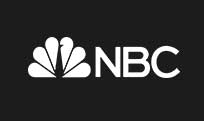
Want Better Fraud Protection? Ask These Questions.
By Sarah Zilenovski, Marketing Manager, ClearSale
Online transaction fraud is a pervasive and growing problem for ecommerce businesses of all sizes and in every location. Card-not-present fraud attempts against online merchants rose by more than 200% last year, thanks in part to fraudsters’ adoption of bots to place fraudulent orders. In the EU, CNP fraud now makes up 70% of the card fraud in the region. As the scope of the problem grows, so does the cost. LexisNexis reported in May that each dollar lost to fraud in 2015 costs merchants $2.40, an increase of 17 cents per dollar over 2014.
Despite these statistics, it is possible for businesses to survive and even thrive in this environment, as long as they have a comprehensive plan in place to combat online fraud. If you’re starting a business of any size that conducts online sales, or if you manage fraud abatement for your employer, here’s a checklist of questions to help you set up, adjust, and review your fraud prevention practices.
What types of fraud does your business face?
Two of the most common types of CNP fraud are chargeback fraud and card-testing fraud. Chargeback fraud involves purchases that are reported as never delivered and then charged back to the merchant by the credit card company. Card-testing fraud happens when thieves with a list of stolen card numbers essentially “play the slots” by attempting purchase after purchase from an online store with different numbers until they find a card number that succeeds. They then use this number to make fraudulent purchases at other stores.
Do you screen all orders?
Some merchants only screen some orders, but this allows fraud to slip through. If you rely on machine learning for screening, omitting some orders will yield an incomplete data set and incomplete fraud protection.
Do you have real-time reports to track your screening and results?
Real-time monitoring can help you adjust your screening methods to identify and counteract trends like surges in fraud attempts or a possible increase in false declines. Current and historical numbers for your store’s approval rate also can show you if there may be a false-decline problem, which is critical because false declines actually cost US merchants more than fraud. It’s also crucial to know your chargeback ratio and track any changes, because that number determines your risk level with merchant banks and card networks. A rising chargeback ratio indicates an increase in fraud that requires immediate action to prevent lost revenue, lost shipped merchandise, chargeback fees from your bank, and higher processing costs if your ratio reaches the “high-risk” level.
What are your fraud-protection costs?
Your ability to budget and plan depends on knowing your expected costs. Make sure you understand any fixed costs that are part of your fraud program, and know if your fraud program costs will increase during sales peaks or when your store is bombarded with fraud attempts. If fraud-related chargebacks occur, who is financially responsible for the lost revenue and bank fees – your business or the fraud protection provider? The more predictable and stable your program costs are, the better overall for your business, as long as the fraud program is also scalable and responsive to sales peaks.
Does your fraud-screening program accommodate all your delivery options?
Rush orders, especially high ticket-value orders from a brand-new customer, require fraud screening that’s both comprehensive and fast. You don’t want to hurry through screening, miss fraud indicators, and lose merchandise and shipping costs to a fraudster. You also don’t want screening-related delays to jeopardize a relationship with a well-heeled legitimate customer who wants a television, designer suit, or sunglasses tomorrow. A good screening program will prioritize and evaluate rush orders to maximize security and customer satisfaction.
How well does your fraud-screening program handle customer contact?
To avoid needless false declines, your fraud protection team will need to call some customers directly to validate orders before approval. When that happens, it’s imperative that they treat your customers—especially VIPs—with exceptional courtesy and competence. Your customer-facing fraud staff should understand each type of customer who buys from you, including individual retail shoppers, special-occasion buyers, and wholesalers.
How strong is your international fraud-screening support?
Your customer-facing team should be available to serve customers in different time zones in a timely fashion so valid shoppers don’t face shipping delays due to screening. The team should also understand the localized order inputs for each market you sell into, such as different address fields for different countries. Finally, you need language and cultural support for international customer contact to validate orders and avoid losing sales to misunderstandings.
Whether your business handles fraud protection in house, outsources it, or uses a combination of onsite and outsourced elements, it’s a good idea to ask these questions regularly and carefully assess the answers to ensure you’re properly protected against CNP fraud. That’s because fraudsters are always developing new ways to beat security measures. To survive and thrive, your fraud-screening program must evolve, too.
Contributed by Sarah Zilenovski, who serves as Marketing Manager at ClearSale, where she is part of the founding team of the ClearSale US branch. Follow on Twitter @ClearSaleUS.














